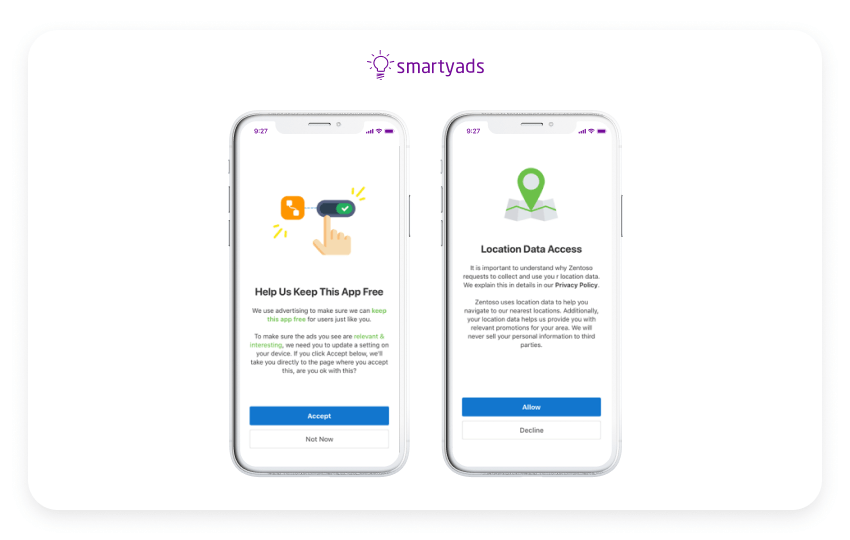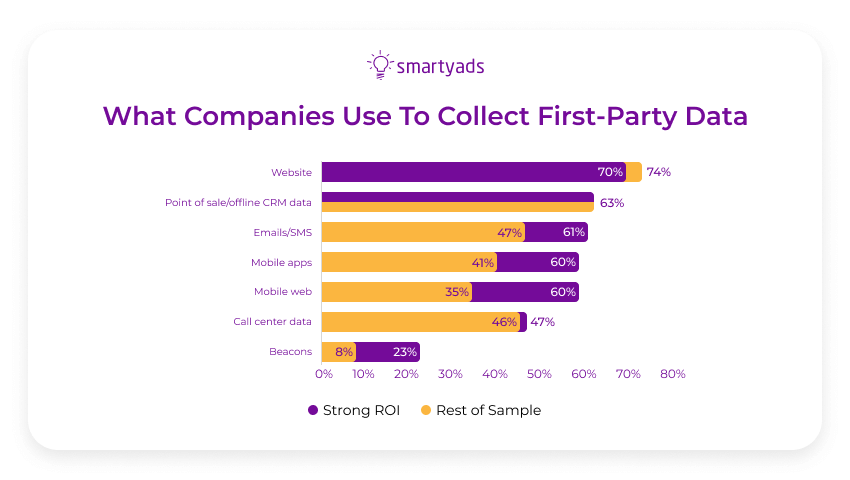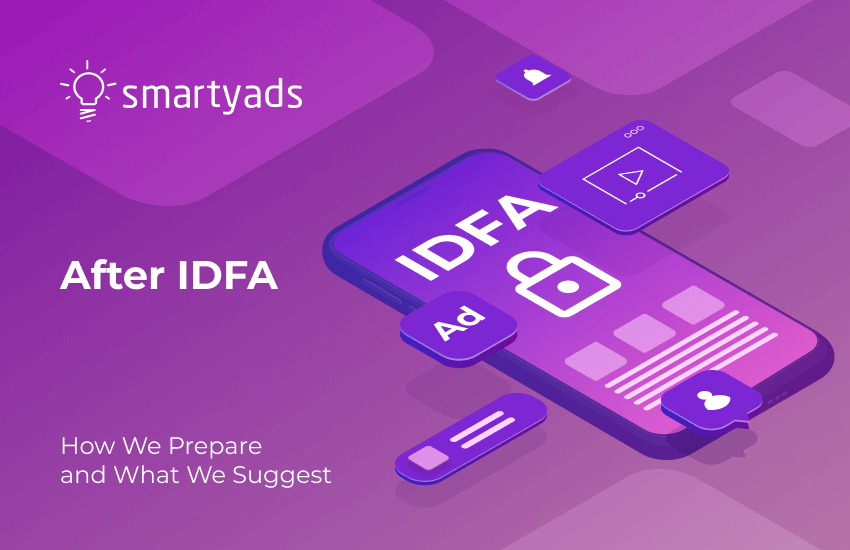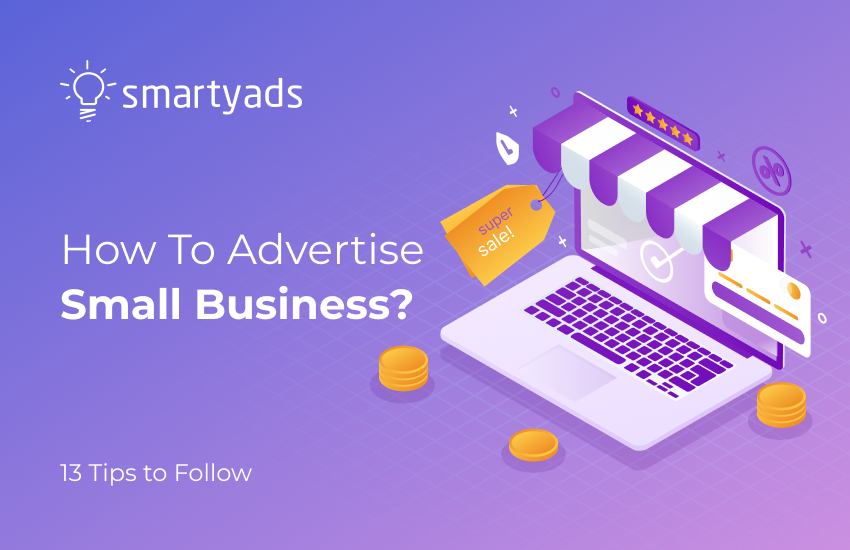In September 2020, news about IDFA restriction in IOS 14 shattered the ad tech world. Apple announced a new App Tracking Transparency framework according to which every time users launch a new app from the app store, they provide their permission before data is shared with third-party resources. On the one hand, it empowers users to easily and directly control access to their personal data; on the other hand, it is expected to burden targeting and attribution in mobile apps as the market expects much fewer opt-ins.
By now, iPhone users have had their devices automatically opted-in to IDFA; however, in March 2021, all IOS 14 devices will be opted-out of IDFA by default. As the new IOS rollout is just around the corner, SmartyAds is preparing to work in a completely new environment. Figuring out all the nuances of the new policy, testing hypotheses, and developing strategies that would allow maintaining efficiency in non-IDFA realities is what we currently do to alleviate the most common fears of advertisers and publishers. Let’s dive in and discover how it will be done, what changes loom ahead and what the next moves are that we’ll all have to take to adjust in a timely manner.
SKAdNetwork as IDFA replacement
Before Apple decided to restrict default IDFA opt-ins, tracking on iOS devices was pretty straightforward - the identifier provided a simple way for marketers and app publishers to track the installs. After the introduction of the new policy, all kinds of tracking will be replaced with the SKAdNetwork platform, intended to monitor app installs anonymously; that is, it will transmit the number of clicks on the advertising campaign, but will not transmit the identifier and will not reveal the user data. This is a new way app installations and conversions will be counted in IOS. To put it in a nutshell, the matter of attribution won’t be bound to identifying who the users are but, rather, what content they consume.
- What will app publishers do? App publishers will need to update their iOS apps and add support for SKAdNetwork - using this framework, they will sign advertisements in their applications and, upon tap, redirect to a page in the app store with a special parameter. When the user initiates app downloading, one of two available methods will be called to register the installation (that method will be contained in the updated versions of SDK). After that, Apple will send information about the successful installation to the ad network.
- What will ad platforms do? In addition to SkadNetwork, it is expected that many ad platforms will be forced to use different matching methods for attribution. For example, some will try to identify a user using IDFV or fingerprint technology; that is, using a combination of IP address, device model, tap time on the advertising link, and so on. According to several mobile app analytics and attribution platforms, like Kochava, attribution accuracy with this method can reach 98%. Apart from this, marketers will leverage identity links that come in handy in case advertisers want to tie users across devices with the help of an internal identifier (e.g., mobile users.)
The market strikes back with the consolidation. What’s next?
With that speed driving users to update to the latest iOS version, by the end of the year, according to various estimates, IDFA will remain active only on 10-20% of devices. The first wave of market adaptation is already evident - marketers, advertisers, demand-side, and supply-side platforms create so-called alliances that aim to facilitate a smooth transition to non-IDFA IOS advertising. The first and the most popular initiative is called “No IDFA? No Problem,” which features plenty of educational videos, case studies, webinars, and articles, each of which will come in handy for making this transition process less painful for ad tech players.
Undoubtedly, we expect to observe negative effects after restrictions are enforced, but they are expected to be relatively short-lived. The thing is, even though some fraction of advertisers will shift their budgets to Android, they won’t completely abandon IOS, as it is a very valuable and high-potential market that represents wealthy audiences. With time, when app publishers learn how to effectively collect IDFA consent, the level of CPM will eventually get back on track.
Of course, it will be much harder to obtain user consent, and eventually, we may end up in a reality of IDFA’s decreased importance. Why? Publishers that stumble upon low opt-ins will gravitate towards alternative sources of data, especially after the death of third-party cookies in most web browsers. Some publishers who can generate and collect first-party data will eventually benefit from the situation.
What’s more to this, right now, we already see how contextual advertising is gaining new life as the market soon is going to deal with a big share of “blind users.” Many developers will face the need to acquire their own in-house ad servers so that data can be collected and segmented and then leveraged to more effectively sell ad space to advertisers.
How the in-app market will be reshaped
There’s no denying that IDFA restriction is one of the most dramatic challenges that the advertising world will soon have to face. Upon consulting some authoritative sources, webinars, and expert opinions, we’ve summed up that the market is bound to go through the following transformations:
- More Android traffic. With the launch of Apple's new IDFA policy, we may see a certain drift of mobile marketers towards spending on the Android ecosystem this year. Still, this situation won’t last long - while Android provides more app downloads, iOS generates more revenue.
- Incentives for opt-ins. Key changes may be expected on the application side. Since IDFA tracking now requires permission, app publishers will seek to convince users to provide consent in exchange for benefits; e.g, in-app bonuses or extended trial periods.
- More direct deals. It is expected that a certain share of publishers and advertisers will give more preference to the direct deals that function based on fixed prices and direct trading that overcomes RTB auctions.
- Moving to first-party data. In case Apple completely removes IDFA from the ecosystem one day, first-party data will become the golden asset for targeting. Publishers will collect only this type of data and advertisers will have to ally and collaborate with publishers as first-party data providers.
What we think, do, and advise regarding upcoming changes
At SmartyAds, we understand that upcoming IDFA changes entail a giant challenge for the ad tech world and our publishers and advertisers aren’t exceptions. We fully support this shift, as it signifies giant progress in terms of privacy. We also hope that the post-IDFA alliance will play a crucial role in this big transition, educating, guiding, and giving us all actionable advice regarding how to adapt and succeed in the new environment.
Even though we are all hoping for better outcomes, we advise developers to take necessary measures to mitigate potential risks that may occur in the next couple of months. Applied strategies may vary from one app developer to another; however, there are several general takeaways that you can consider:
Advice for app developers and publishers
- Make consent prompts convincing. Prepare beforehand and make sure that you correctly communicate your purposes with your users. Smooth out the sharp edges while informing your audience what their data will be used for. Try to explain to users in the prompt that by giving consent, they support service delivery and experience personalization.

- Prepare incentives. Think of additional ways to convince your users to opt-in: in-game benefits, bonuses, or paid content that you give out in exchange for opting in.
- Adjust the bid stream. When possible, adjust the bid stream to transfer more parameters (app store URL, bundle, etc.). Such data contained in the requests will make the potential impression more valuable for advertisers who target users in the non-IDFA environment.
- Embrace the SKAdNetwork. Be prepared to tap into the SkadNetwork framework, as, so far, it is the only way to track conversions in performance-oriented app install campaigns.
- Update SDK. When possible, update your SDK from time-to-time, as it will help you to achieve better results from monetization.
- Keep options open. Don’t solely rely on CPI campaigns in your monetization; instead, take a look at alternative sources of income and campaigns that don’t require passback to the app store.
Advice for advertisers
Advertisers are expected to be affected most, since targeting capabilities that SKAdNetwork delivers are no measure to IDFA (if we talk about tracking installs). As we dive into the completely new advertising ecosystem, here’s what we can advise our demand partners:
- Make a focus on viewability. Start to target your audience, taking into account viewability rather than criteria that you applied when IDFA was still in place. Diversify your media mix and make sure to distribute your ad budgets evenly across channels, investing in other high potential mediums and formats, like CTV.
- Embrace first-party data. As more publishers collect first-party data, it provides a great chance to advertisers to polish their targeting capabilities.

- Increase share of your PMP and direct deals. As we mentioned earlier, amidst the transitioning environment, many buyers will increase their share of PMP and direct deals, as it will give them more insight regarding the advertising inventory they are going to buy.
- Attribute with new tools. Many DSPs are currently testing new mechanisms that are aimed to replace IDFA. Keep on track with your DSP and stay aware of what kind of mechanisms and tools they are offering as a replacement to IDFA attribution.
How we are going to prepare
At SmartyAds, we are committed to the constant improvement of our services to let our publishers, advertisers, and partners that operate their white label ad solutions the chance to reach the best possible business outcomes. In these challenging times, we intend to equip our technologies with all essential tools and controls needed to protect your ROI and yields and keep the effectiveness of advertising and monetization equal to the pre-IDFA period.
Existing ad tech solutions that we have in our ad stack are being reviewed to define how to better adjust them in accordance with the new standards. Once all testing, reviewing, and measurements are done, our platforms will align with the best new industry mechanisms available for targeting and attribution. On top of that, we will always cooperate with our partners and be open to conversations while considering support for those solutions that our partners embrace.
“Luckily, with all expertise and experience in mobile tracking and attribution, we know how to undergo a smooth and successful transition into this new post-IDFA era. Developing new techniques, bringing in innovative and the most cutting-edge mechanisms for targeting and programmatic measurement - these are the components of the massive workload that we planned to ensure that targeted advertising remains effective for our IOS advertisers and publishers,” says Liz Tokareva, Director of In-House Products at SmartyAds.
As we move closer towards the privacy-centric IOS advertising ecosystem, we assess various new IDFA replacement mechanisms. Very soon, we’ll also roll out our new, updated version of SDK for mobile publishers. Presumably, the new version will have Apple’s SKAdNetwork API support that will regulate the data available for campaign targeting and measurement. To mitigate the effects of potential data limitations, we will most certainly additionally employ available attribution techniques for our advertisers. We will continue our work in this direction, while also paying great attention to adjusting our white label solutions.
“In the near future, we are intended to open contextual targeting options for our white label products, we are going to add analytics regarding the attribution and change the approach to the frequency capping by using advanced options in case IDFA IDs are missing. Plus, we see collaboration with our partners and our shared efforts as the critical point that will drive fast and effective breakthrough progress in this transition. By now, we’ve already completed the implementation of the identity links for one of our partners. As for the new DMP that we build - it will be privacy-friendly by design: the standard user segmentation is left in the past as we embrace contextualization of targeting, content analysis, and apply supplemental signals,” says Anastasia Bansal, Director of Enterprise Solutions at SmartyAds.
To sum up
2020 gave us a lucid explanation to the question of why it is so important to adapt and innovate rapidly. Fast response to the ad tech market transformations, ad technology changes, and data regulation updates have become the prime strength for ad tech companies that confidently navigate the ever-changing media landscape. From now on, the advertising world that previously relied on Apple's Advertiser Identifier will have to learn new ways and master new techniques to deliver and monetize personalized ads. As we are developing and planning how to make this transition effective and easy for everyone, we ask you to review this article to stay informed and updated when the final step is done.




